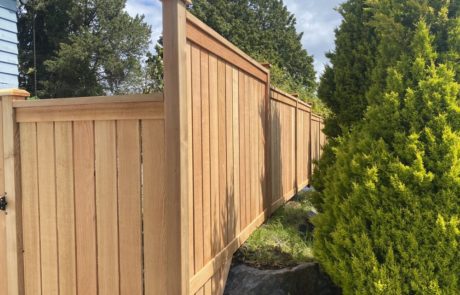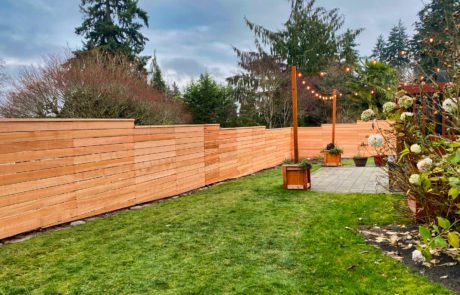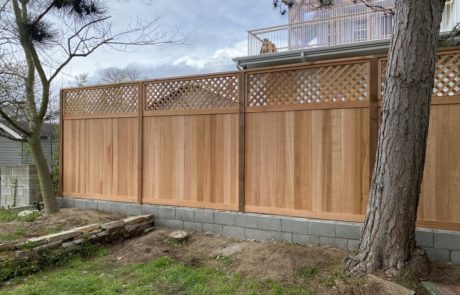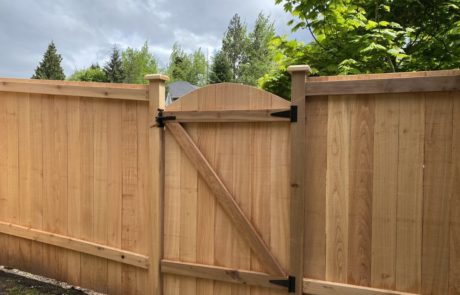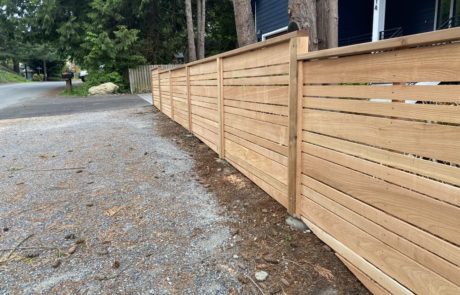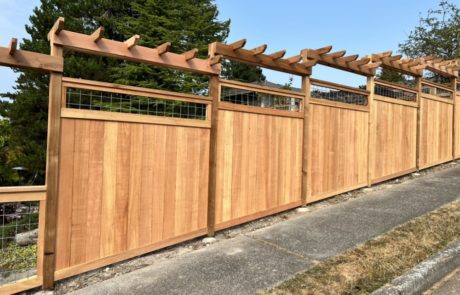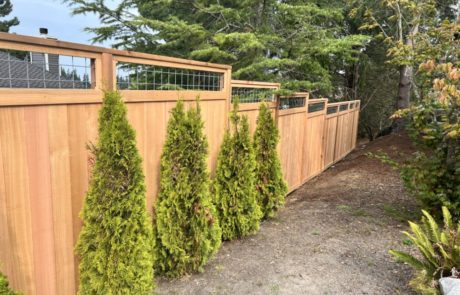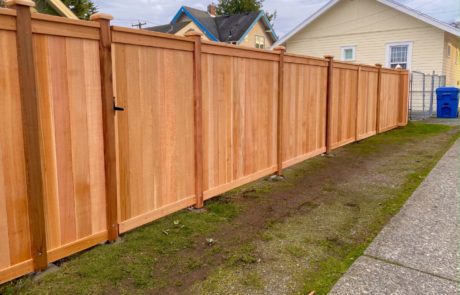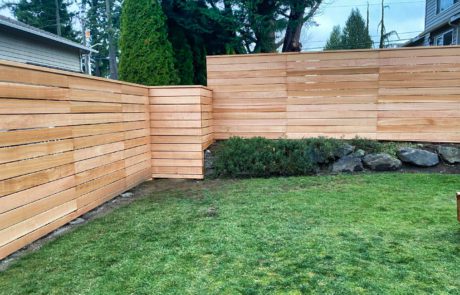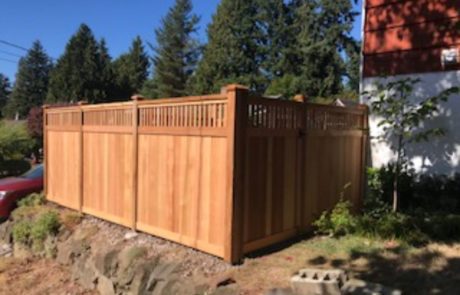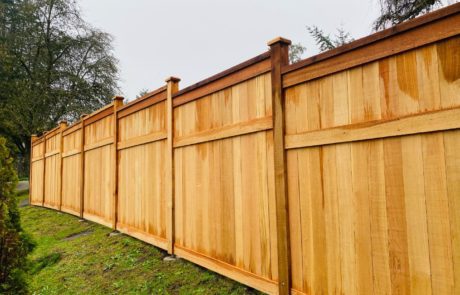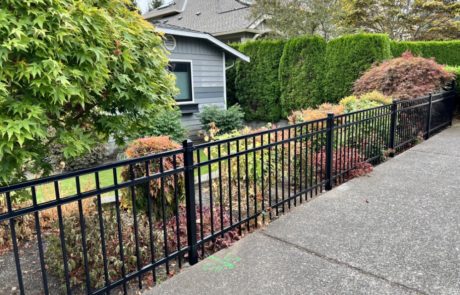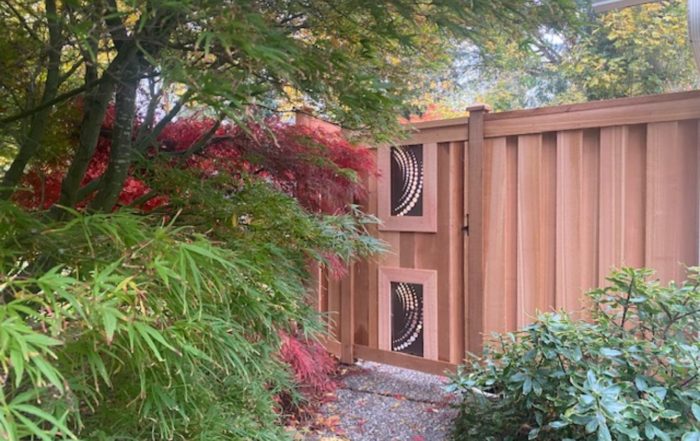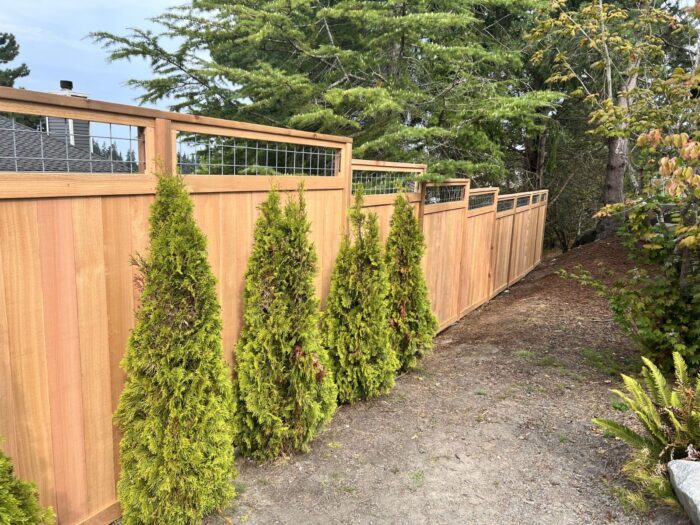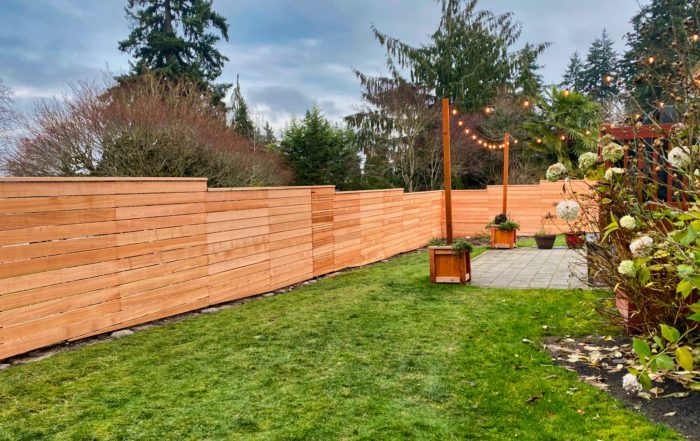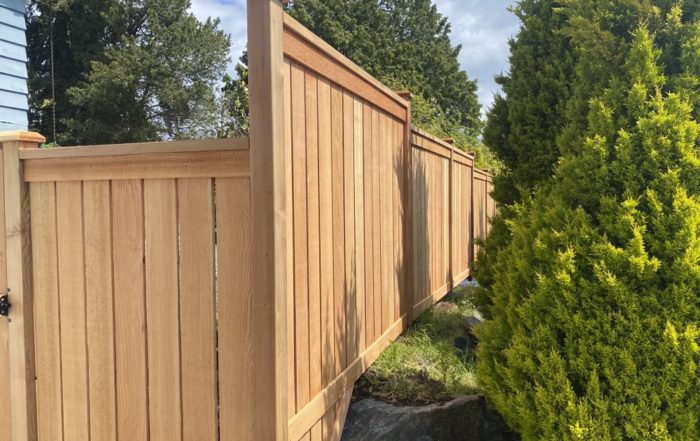When it comes to beautifying and preserving the life of your cedar fence, stain and seal are crucial factors to consider. In this guide, we'll delve into why you should always stain and seal your new cedar fence, when it's best to do it, and the appropriate process to follow for optimum results...
When it comes to beautifying and preserving the life of your cedar fence, stain and seal are crucial factors to consider. In this guide, we’ll delve into why you should always stain and seal your new cedar fence, when it’s best to do it, and the appropriate process to follow for optimum results.
Why Staining and Sealing is Essential for Your Cedar Fence
Cedar fences are a popular choice due to their natural beauty and durability. They are resistant to insects, decay, and weather conditions. However, this doesn’t make them invincible. Over time, exposure to sun, rain, and snow can fade their color and reduce their lifespan. That’s where staining and sealing come into play.
As professional fence installers with over 20 years experience we highly recommend you stain and seal your cedar fence. This process not only enhances the natural color and beauty of the wood but also provides a protective layer against the elements. It helps to prevent the sun’s UV rays from graying and fading the wood, while also repelling moisture that could lead to mold, mildew, and rot.
Comparing Staining to Painting
Some may wonder, “Why not just paint the cedar fence?” For starters, paint sits on top of surfaces, while stain penetrates into the material. Plus, paint also requires a primer, while stain does not.
While it is ultimately a matter of personal preference, we do not recommend it for the following reasons:
- Hides the Natural Beauty: Cedar wood’s unique grain patterns and natural beauty are covered up by paint.
- Maintenance Hassle: Painted fences require regular maintenance as the paint can chip, crack, or peel over time.
- Limited Lifespan: Paint can trap moisture and lead to rot, mold, and decay, shortening the fence’s lifespan.
- Difficult to Remove: Removing paint from cedar can be challenging and may damage the wood.
- Cost Considerations: Painted fences have higher long-term maintenance costs compared to other protective options. This is especially important with rising material costs.
- Environmental Impact: Some paints contain toxins that can harm the environment when they deteriorate.
- Time-Consuming Application: Painting a cedar fence is time-consuming, requiring thorough surface preparation and drying time between coats.
- Natural Resistance: Paint diminishes cedar’s natural resistance to rot, insect damage, and decay.
- Compatibility with Cedar: Paint may not adhere well to cedar wood, leading to premature peeling or flaking.
Optimal Timing for Staining and Sealing Your Cedar Fence
Timing is crucial when it comes to staining and sealing your new cedar fence. Doing it too soon may result in a less effective seal, as the stain and sealer need to penetrate the wood. On the other hand, waiting too long could expose your fence to weather damage.
So when is the best time to stain and seal your cedar fence? Typically, it’s recommended to wait approximately 3-12 weeks after the fence is installed. This gives the wood enough time to dry out fully and will allow the stain and sealer to penetrate more effectively.
The Right Process for Staining and Sealing Your Cedar Fence
Staining and sealing your cedar fence isn’t just about slapping on some product and hoping for the best. It requires careful preparation and the right technique. Here’s a step-by-step guide to doing it right:
- Clean the fence: Use a mild detergent or wood cleaner to remove any dirt or grime. This allows the stain and sealer to adhere better.
- Let it dry: Give your fence enough time to dry thoroughly after cleaning. This may take a couple of days depending on the weather.
- Apply the stain: Using a brush, roller, or sprayer, apply the stain evenly across the fence. Always follow the manufacturer’s instructions.
- Apply the sealer: Once the stain is dry, apply a coat of sealer to provide additional protection.
- Maintain regularly: Check your fence yearly for any signs of wear and tear. Apply a new coat of stain and sealer every 3 to 5 years, or sooner if needed.
This process not only maximizes the life of your cedar fence, but it also keeps it looking beautiful year after year.
Selecting the Right Stain and Sealer for Your Cedar Fence
Choosing the right stain and sealer is just as important as the staining and sealing process itself. When selecting a stain, consider factors such as color, type (transparent, semi-transparent, or solid), and UV protection.
Sealers are also important and should provide a strong layer of protection against water and the sun. Look for sealers specifically designed for cedar fences as they will provide the best protection.
By staining and sealing your new cedar fence, you’re investing in its longevity and beauty. So, don’t overlook this crucial step after your cedar fence installation. It’s a small effort that will yield significant results in the long run.
Remember, your cedar fence is more than just a boundary marker—it’s a vital part of your home’s exterior aesthetic. Treat it with the care it deserves, and it will reward you with years of beauty and durability.
Frequently Asked Questions
How long should I wait before staining my new cedar fence?
Typically, you should wait between 3 to 12 weeks after installation to stain your new cedar fence. This gives the wood time to dry out thoroughly.
Do I need to seal my cedar fence if I’ve already stained it?
Yes, sealing is crucial even if you’ve stained your fence. The sealant acts as an additional waterproofing layer, enhancing the effectiveness of the stain and providing extra protection against the elements.
How often should I re-stain and re-seal my cedar fence?
For optimal protection and aesthetics, it’s recommended to re-stain and re-seal your cedar fence every 3 to 5 years.
Can I skip staining and only seal my cedar fence?
While sealing provides important protection, skipping the staining step could leave your fence vulnerable to UV damage and discoloration. Staining provides the color preservation and enhanced insect resistance that sealing alone does not offer.
What if my cedar fence has already grayed or discolored, can I still stain it?
Yes, you can still stain a gray or discolored fence. However, you may need to clean and prepare the surface properly to ensure the stain adheres well and provides an even finish.
How do I know when it’s time to re-stain and re-seal my cedar fence?
Typically, when the color starts to fade or the water no longer beads on the surface of the wood, it’s time to re-stain and re-seal your cedar fence. Regular inspections can help you catch these signs early.
Do weather conditions affect when I should stain and seal my cedar fence?
Yes, weather conditions play a crucial role. Ideal staining and sealing conditions are dry and mild weather. It’s best to avoid rainy days or periods of intense heat.

